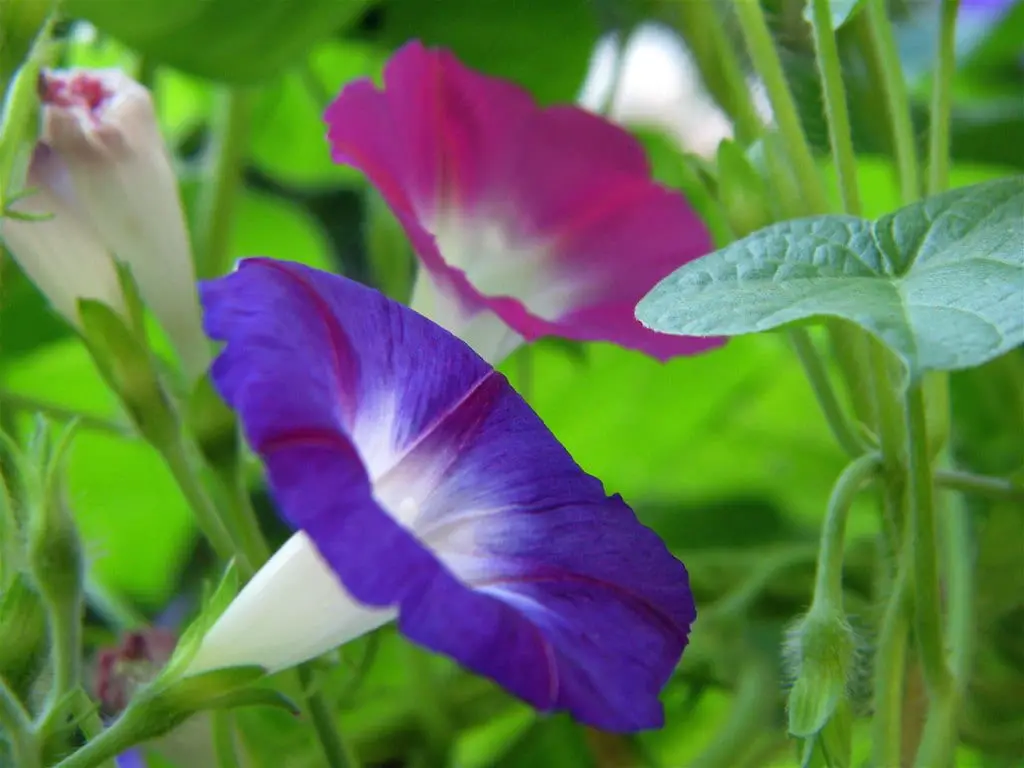
Image credits: Pixabay
Who wouldn’t want a garden that is full of gorgeous flowers? The beautiful flowers engage your senses with their attractive colors and enticing aromas while inviting bees, birds, and butterflies. While many would love to create a garden that is a cynosure of all eyes, not everyone has the time or patience to provide ongoing care and attention that plants demand. However, a garden of your dreams is not that hard to create if you choose flowering plants that are easy to grow and low on maintenance.
Here is a list of flowers that are not only stunning but are easy to grow and take care of:
List of flowers that are easy to grow
Sunflowers
If you are a first-time gardener, sunflowers are a must-have in the list of flowers you should grow in your garden. These sun-loving flowers not only look stunning but provide seeds that are delicious and healthy. They also happen to be a terrific choice for novice gardeners because they are easy to grow and low on maintenance. They can thrive even in soggy soils; they can weather droughts with aplomb as well. Of course, as their name indicates, the only thing they need in abundance is unimpeded, direct sunlight for a duration of six to eight hours. Plant them in an open area and ensure they are away from other plants as they can deprive the other, smaller plants of sunlight.
Sunflowers are annual plants and are tough and tall, with some varieties growing to a height of 14 feet. There are smaller varieties that grow up to one foot and are perfect for your small garden or terrace pots. The brightly colored flowers attract birds and bees, which makes them ideal for a pollinator garden. The blooming season, not surprisingly, for most sunflower varieties is midsummer.
The plants prefer well-drained, loose, and slightly alkaline soil that has a pH between 6.0 and 7.5. For maximum blooms and optimum health, these plants should be grown in nutrient-rich soil enriched with organic matter or compost.
While you can obtain starter plants from a nursery, you can also grow them from seeds. Plant seeds post the spring frost and when the soil temperature reaches 60 degrees at least. Plant the seeds six inches apart and an inch deep. The bloom can take up to 120 days, and when the plants are small, water around the roots gently. An established plant needs to be watered infrequently but deeply. Watering generously once a week may suffice, although, in very hot and dry conditions, the plant may need more water.
Pansies
Pansies top the list of flowers for those who have a brown thumb but wish to surround themselves with beautiful plants. These flowering plants are tough to kill as they are highly resilient to harsh winter temperatures. While there are 300 or more varieties of pansies, some have been bred for very cold or very hot temperatures.
For those who live in the north, the best time to plant these flowers is August, when the soil temperature reaches 60°F, while the ideal time is October for those who live in the southern regions. The easiest way to grow pansies is to buy fully grown plants and transfer them directly to the ground or pot.
Pansies grow in partial or full sun, while they thrive in cooler temperatures. Expose them to direct sunlight in colder states for best results while giving the flowers some shade in warm states like Texas is recommended. Pansies like well-drained, rich soil, and require regular watering. Pansies also do very well in portable containers as it is easy to move them to cooler areas when the sun gets stronger.
Coneflowers
There are many reasons why the old-fashioned but beautiful coneflowers should feature on the list of flowers that have to be grown in your garden. Even if you know nothing about plants, the only thing you need to do is put the coneflower plant the right side up in the ground! Coneflowers, like many other plants, prefer well-drained soil and plenty of sunlight. These bright flowers are native to eastern states and belong to the daisy family (Asteraceae). While they reach a height of up to four feet, these flowering plants are fast growers. The flowers bloom in midsummer and continue through fall. Coneflowers are resistant to both drought and poor soil conditions. However, they are at their best when a nutrient-rich soil is provided. While the traditional purple coneflowers grow almost anywhere, the red, orange, and yellow varieties need moist and rich soil.
Zinnias
If you are preparing a list of flowers to plant in your garden that creates a riot of colors, Zinnias are the right choice. A bonus is that they are easy to grow and grow quickly while blooming heavily.
The annual flowers prefer neutral pH to slightly alkaline soil and thrive when exposed to full sun. As the flowering plants do not do well when transplanted, it is recommended to grow zinnia plants from seeds in the garden bed. They grow quickly from seeds under the right conditions. They can also be started indoors in pots. The preferred temperature range is between 74 and 84°F, although the Zinnias will grow at 60°F. As these flowers are frost sensitive, plant the seeds after the passing of the last frost. Adding compost to the soil will help the plant grow quickly and optimize blooming.
Marigold
Marigolds feature in the list of flowers that add cheer and brightness to your garden. While being incredibly easy-going, marigolds are reliable and resilient to varied growing conditions. Once planted, these flowers grow quickly without fuss. While they do best in full sun and take in their stride very hot summer conditions, they can also handle reflected light and heat from paved surfaces, provided they receive adequate moisture. They can tolerate 20% of shade when there is adequate brightness for the rest of the day.
While there are many varieties of marigolds, signet and Young French marigolds can be planted through midsummer from spring, while the African marigolds need to be planted in the spring.
Once the soil in your garden is warm, sow the seeds directly. While you can also sow the seeds indoors, they germinate easily outside. The plants produce blooms typically in four weeks.
Some marigold varieties are drought-tolerant, and some others are resilient to wet conditions. Choose the right variety based on the prevailing weather conditions in your location. While they can adapt to any type of soil, these bright flowering plants thrive in well-drained, moderately fertile soil. Avoid excess nutrients in the soil that can promote lush foliage instead of flowers.
Water thoroughly when the soil is dry and provide more water when the weather is hot and sunny.
Morning glories

Image credits: Wikimedia Commons
The botanical name of Morning Glories is Ipomoea purpurea, and these beautiful flowers typically make it to the list of flowers that dot landscapes. The fast-growing plants make lovely additions to your garden and produce funnel-shaped, attractive blossoms of different color shades ranging from red, purple, white, blue, and yellow. The flowers bloom between May and September and open up in the morning and close in the afternoon. As the plant readily self-sows, you need to be careful about where you plant. Typically, Morning Glories drape over arches, trellises, or walls and attract butterflies and birds.
They thrive in well-drained soil that is moderately fertilized and needs full sun exposure. The low-maintenance flowering plant only needs to be watered once a week during the dry season. Adding mulch will help retain moisture while preventing the growth of weeds.
Nasturtium
Nasturtium flowers are eye-catching, versatile, and are also fully edible. These plants are easy to grow while being low on maintenance and care. They can be bushy, cascading, or climbing, and because they are known to thrive on neglect, they are the best choice for people who have very little time to take care of plants. These are the reasons why nasturtium makes it to the list of flowers that everyone wants to have in their garden.
There are fifty or more varieties of nasturtium plants, and all of them do well when planted in full sun. The flowering plant needs well-drained soil while it can tolerate poor soil. Excess fertilizer or rich soil results in fewer flowers and lush foliage growth.
During the growing season, it is important to water these flowering plants thoroughly while you need to be careful to avoid overwatering them. Cutting off dead or faded flowers will encourage blooming. Trim back the plants if you are growing them in containers.
Gain confidence as a plant parent
These gorgeous flowers are sure to be conversation-starters and the envy of neighbors. While you can experiment with a combination of different flowers, ensure the flowers you choose are suitable for the region you live in. The easy-care flowers are perfect for those who think they have a brown thumb and help them gain confidence before they move on to plants that require intensive care.
